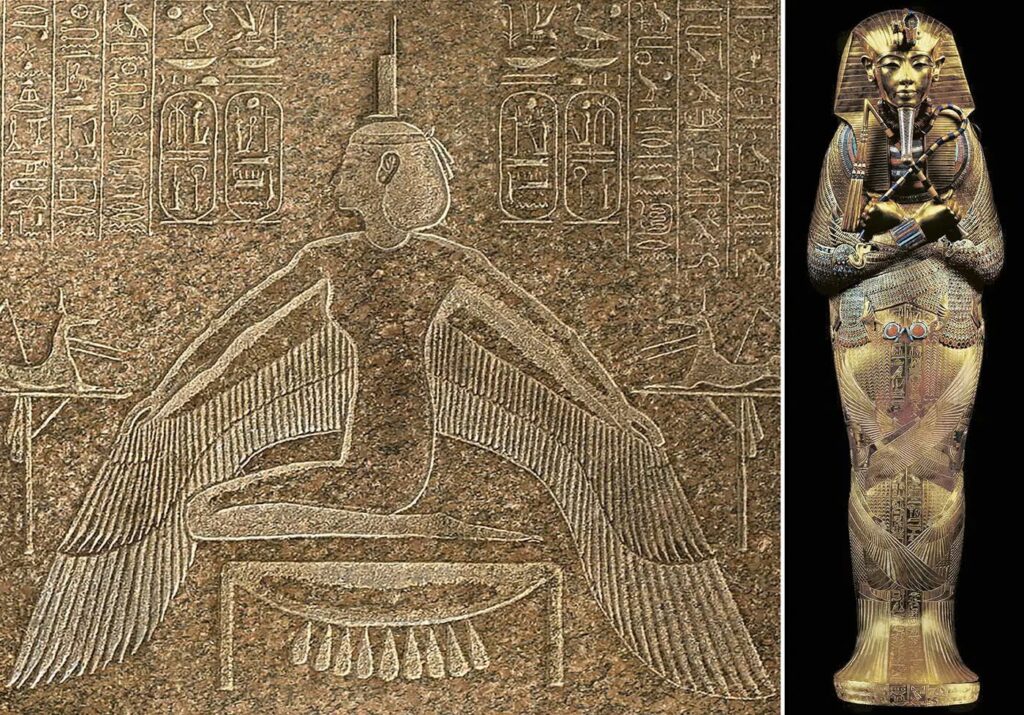Isis is one of the most revered goddesses in ancient Egyptian civilization, beautifully represented in a stunning bas-relief from the 18th Dynasty of the New Kingdom during the reign of Amenhotep III (circa 1391-1353 BC). This artwork, currently displayed in the Egyptian Museum in Cairo, depicts Isis gracefully kneeling on a stool shaped like the Nebu hieroglyph, symbolizing gold.

Isis was not just a singular figure; she was a multifaceted goddess embodying various crucial aspects of Egyptian life and spirituality, including motherhood and family, magic and healing, death and rebirth, good fortune, as well as the sea and travel. She was also regarded as a protector of the dead and a key figure in the afterlife journey.

Magic was central to Isis’s power, evident in many myths involving her. She used her magical abilities to resurrect her husband, Osiris, and to protect her son, Horus. One particularly notable story involves her creating a venomous snake to bite Re, the sun god; he could only be healed by revealing his true name to her.

This narrative underscores a fundamental belief in ancient Egyptian magic: knowing someone’s true name granted significant power over them. The image of Isis continues to endure through artistic representations, from intricate coffin decorations to grand temple reliefs, highlighting her lasting influence in ancient Egyptian religion and magic. Her legacy continues to captivate and inspire, bridging the mystical past with our modern understanding of one of history’s most fascinating civilizations.
Video

